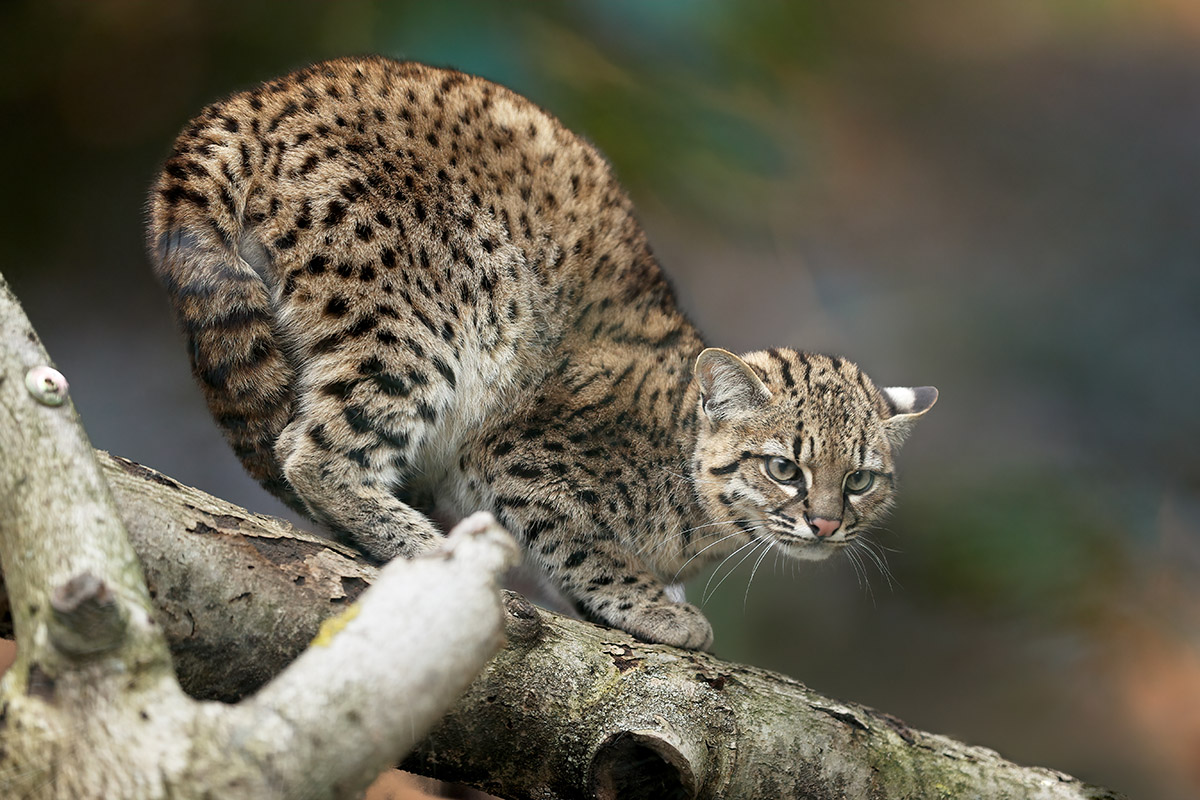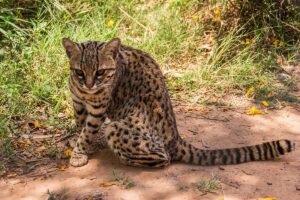The little spotted Geoffroy’s cat (Leopardus geoffroyi) was considered extinct, possibly even a mythological animal, until it was sighted in 2015. And it happened largely by accident.
“Someone’s cat has escaped,” reported a technician who was installing solar panels at Las Torres Reserve. He had just seen a small cat in bushes far from the hotel and resident housing, where there are no domesticated animals.
Until then the little wild cat had been something of a myth. The owners of the reserve and a few former works had mentioned seeing it long before, but no one had proof.
In 2019, the cat was spotting carrying food (a native rodent) on camera traps installed by the nonprofit AMA Torres del Paine. And just like that, the cat went from legend to reality.
Confirmation of its existence in Torres del Paine was a milestone, as the feline’s presence was a positive sign that the national park’s coexistence between tourism and wildlife was working. It had not been displaced from its habitat, an obvious result of conservation efforts. The cat’s presence adds important knowledge about the species and helps generate awareness and encourage people to join conservation efforts to ensure its survival.
Around the size of a domestic house cat and heavily spotted, the Geoffroy’s cat prefers the dense vegetation of the Patagonia steppe so it can avoid predators such as pumas or foxes. A nocturnal animal, it’s rarely seen in the daytime, but is known to sometimes hunt for prey by standing on its hind legs.
Geoffroy’s cat, Leopardus geoffroyi, a wild cat native to South America on a branch against abstract background. Threatening posture, ears down. Night and lonely South American cat.


0 Comments